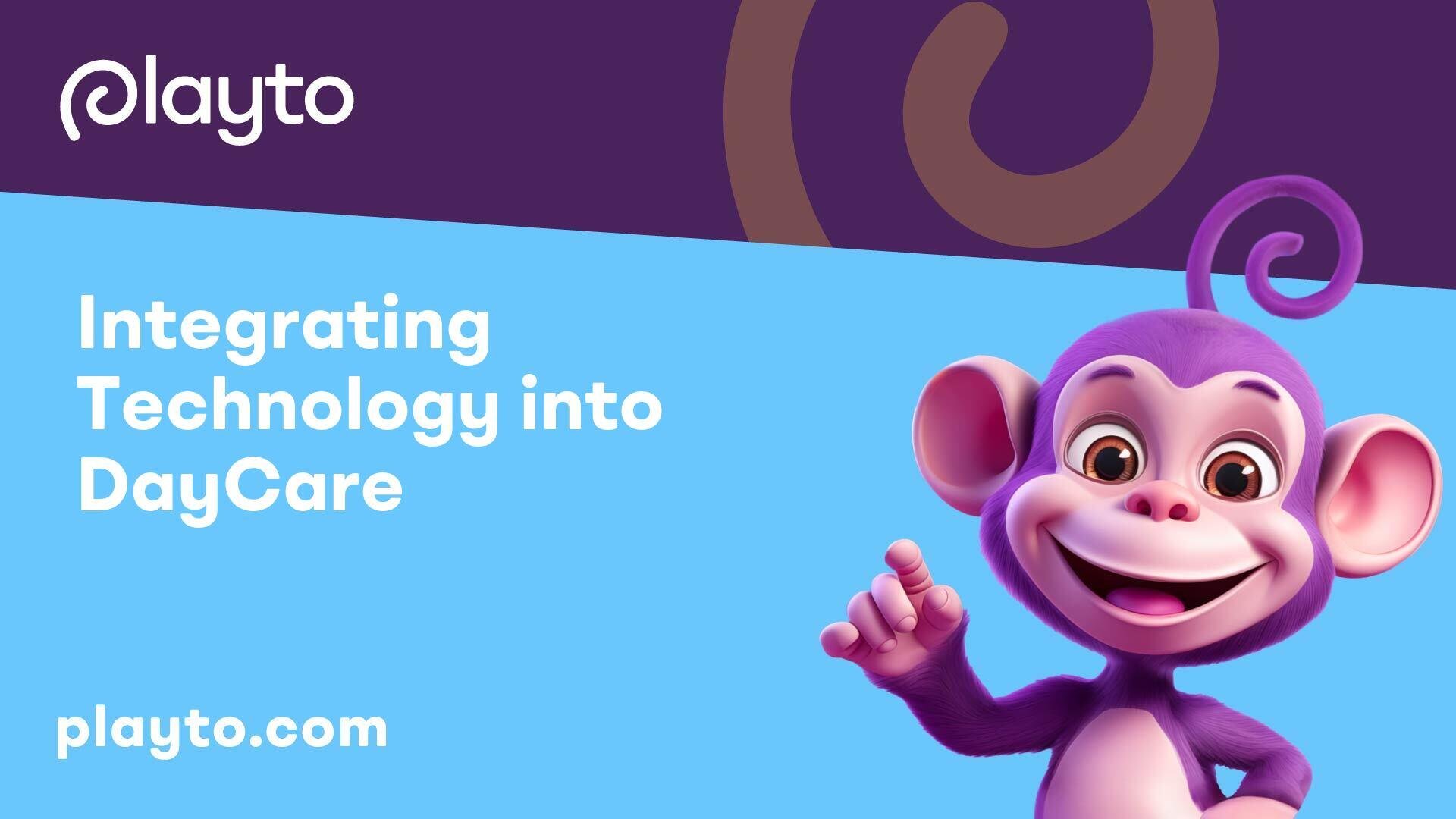
Establishing Daily Routines
In the realm of DayCare, establishing consistent daily routines is paramount to the well-being and development of children under care. These routines not only promote a sense of security and familiarity but also aid in building essential life skills and a structured environment beneficial for young minds.
Importance of Predictable Schedules
Consistent daily schedules and step-by-step routines play a crucial role in providing children with predictability and familiarity, ultimately contributing to their confidence and security in both group care settings and at home [1]. Predictable schedules help children of varying ages, from infants to older toddlers and young children, in developing relationships, gaining self-confidence, demonstrating independence, and adjusting to changes more easily.
By adhering to a predictable schedule, children can anticipate transitions between activities, reducing anxiety and fostering a sense of structure. This predictability not only aids in the overall management of the daycare facility but also supports the emotional well-being of the children in care.
Structured Routines for Security
In a preschool classroom setting, effective routines are vital to support children's developing abilities, promote consistency, and create a stable community environment [2]. These routines encompass activities like arrival time, bathroom time, clean-up time, naptime, and departure time.
It is essential for routines to align with the developmental stage of each child, fostering autonomy and independence while maintaining a clear and straightforward structure. Well-structured routines not only provide a sense of security for children but also aid in their spatial and temporal understanding, crucial for their overall growth and development in a daycare setting.
By emphasizing the importance of predictable schedules and implementing structured routines, daycare centers can create a nurturing environment that supports the holistic development and well-being of the children under their care. These routines serve as the foundation for a stable and secure daycare experience, facilitating a positive and enriching environment for young children in New York.

Promoting Play and Engagement
In a daycare setting, promoting play and engagement among children is essential for their overall development and well-being. By embracing free-choice time and encouraging outdoor activities, daycare providers can create enriching environments that support children's growth and creativity.
Embracing Free-Choice Time
Preschool children thrive when provided with ample free-choice time during their daycare experience. According to Virtual Lab School, dedicating at least 60 minutes of the day for free-choice time in the classroom is recommended for programs operating eight hours or more. This unstructured playtime allows children to explore their interests, engage in imaginative play, and develop social skills through interactions with their peers. By offering opportunities for extended play sessions, daycare facilities can foster active engagement and help children achieve their learning goals.
Encouraging free-choice time empowers children to make independent decisions, develop problem-solving skills, and explore their creativity in a supportive and nurturing environment. Through play, children can express themselves, build confidence, and enhance their cognitive and emotional development. To learn more about the benefits of positive reinforcement in daycare, explore our article on positive reinforcement in daycare.
Benefits of Outdoor Activities
Outdoor activities play a vital role in the overall development of preschool children in daycare settings. Allocating a minimum of 60 minutes per day for outdoor time is recommended for programs operating eight hours or more. Outdoor play provides children with the opportunity to engage in physical activities, interact with nature, and enhance their gross motor skills.
During outdoor play, children have the freedom to direct their own play, explore the natural environment, and engage in collaborative games with their peers. This active engagement not only promotes physical health but also contributes to the development of social skills, teamwork, and environmental awareness. Furthermore, regular outdoor time can lead to long-term health benefits by promoting physical activity and a connection to the natural world.
By incorporating outdoor activities into the daily routine of a daycare program, providers can create dynamic and stimulating environments that support children's holistic development. To learn more about recognizing high-quality daycare facilities, explore our article on recognizing high-quality daycare.

Group Learning Dynamics
In the dynamic environment of a daycare setting, group learning plays a pivotal role in the development and education of young children. Incorporating both large-group activities and small-group sessions can create a well-rounded learning experience that caters to different aspects of a child's growth and education.
Large-Group Activities Benefits
Initiating large-group activities led by teachers offers numerous benefits for preschoolers. These activities not only foster a sense of community and teamwork but also aid in the development of early literacy skills, attention span, and behavioral control. Research from Virtual Lab School suggests that teacher-directed large-group times should ideally be kept short, around 15 to 20 minutes per session. This duration ensures that children remain engaged and focused throughout the activity, maximizing learning outcomes.
Engaging in large-group activities allows children to practice important social skills such as turn-taking, listening, and following instructions, all of which are crucial for their social and emotional development. Moreover, these activities provide an opportunity for educators to introduce new concepts, themes, or skills to the entire group, creating a shared learning experience that strengthens the sense of community within the daycare environment.
To learn more about positive behavioral techniques in daycare settings, visit our article on positive reinforcement in daycare.
Enhancing Learning with Small-Group Sessions
In addition to large-group activities, incorporating small-group sessions provides children with personalized attention and targeted learning opportunities. Small-group activities allow educators to focus on specific learning goals in a more intimate setting, promoting active engagement and interaction among peers.
According to Virtual Lab School, small-group activities are conducive to reducing wait times, facilitating hands-on manipulation of materials, and offering one-on-one attention from the teacher. Ideally, these sessions should be kept brief, aiming for 15 minutes or less per group to maintain children's focus and involvement.
During small-group sessions, educators can tailor activities to match the individual needs and interests of the children, creating a more customized and interactive learning experience. This personalized approach not only enhances academic learning but also promotes social skills, problem-solving abilities, and creativity among young learners.
To explore more tips on creating high-quality learning environments, check out our article on recognizing high-quality daycare. By balancing large-group activities with small-group sessions, daycare providers can create a comprehensive learning environment that supports the holistic development of children and nurtures their curiosity and thirst for knowledge.
Preschool Classroom Necessities
In the realm of preschool education, establishing effective daily routines and ensuring classroom stability and development are fundamental aspects that contribute to a nurturing educational environment for young learners.
Effective Daily Routines
Consistent daily schedules and step-by-step routines play a pivotal role in preschool classrooms, providing children with predictability and familiarity. These routines are crucial for their confidence and security, supporting their development in group care settings and at home [1]. By offering predictability, children, ranging from infants to older toddlers and young children, can develop relationships, gain self-confidence, demonstrate independence, and adapt to changes more easily.
Effective preschool routines often include activities like arrival time, bathroom time, clean-up time, naptime, and departure time. These routines are tailored to support children's evolving abilities, promote consistency, and foster a stable classroom community. It is essential that routines are age-appropriate, encourage autonomy, and are clear yet not overly complex to ensure smooth classroom operations and enhance the overall learning experience [2].
Classroom Stability and Development
Building classroom stability and facilitating development are integral components of a preschool learning environment. Stability within the classroom creates a sense of security for young children, enabling them to explore, learn, and interact confidently with their surroundings. A stable classroom environment nurtures a sense of belonging and fosters positive relationships among students and with their educators.
To promote classroom stability and development, it is imperative for educators to create a safe and structured space where children can thrive. Providing consistent routines, engaging learning materials, and supportive interactions helps children feel secure and enhances their social and emotional growth. Moreover, a stable classroom environment encourages exploration, creativity, and a love for learning among preschoolers.
By prioritizing effective daily routines and focusing on classroom stability and development, preschool educators can create a positive and enriching learning environment that promotes growth, learning, and well-being among young learners. These essential elements form the foundation for a nurturing and stimulating preschool experience that supports the holistic development of each child in their care.
Healthcare Technology Integration
In the realm of daycare facilities, the integration of technology is increasingly becoming a vital component to enhance the quality of care and optimize operational efficiency. Two key aspects to consider in this domain are the advancements in healthcare IT and the role of artificial intelligence (AI) in healthcare.
Advancements in Healthcare IT
The healthcare industry is amidst a transformative era, where the adoption of new IT-based technologies is revolutionizing the way care is delivered. These advancements are driven by a need to address challenges such as accessibility, costs, waste reduction, and the aging population.
In daycare settings, the integration of healthcare IT solutions can streamline administrative tasks, enhance communication among staff, parents, and healthcare providers, and improve the overall quality of care provided to children. Tools such as electronic health records (EHRs) and telehealth platforms allow for efficient documentation and real-time communication, ensuring that children's health needs are met promptly and effectively.
By leveraging healthcare IT advancements, daycare centers can enhance their ability to monitor and manage children’s health records, track developmental milestones, and communicate important health information with parents and healthcare professionals.
Role of Artificial Intelligence in Healthcare
Artificial intelligence (AI) is poised to revolutionize the healthcare landscape, introducing new possibilities for improved diagnostics, treatment choices, and overall healthcare delivery. AI has the potential to simplify healthcare systems, enhance medical research, and optimize clinical decision-making processes [3].
In daycare settings, AI can play a significant role in facilitating early intervention for developmental delays, analyzing health data to identify patterns and trends, and even supporting educators in creating personalized learning plans for children with unique needs. By harnessing the power of AI algorithms, daycare facilities can enhance their ability to provide individualized care and support to each child, ensuring optimal growth and development.
Integrating AI technologies in daycare centers can also aid in automating routine tasks, such as scheduling health check-ups and tracking immunization records, allowing staff to focus more on direct interactions with children and personalized care delivery.
By embracing the advancements in healthcare IT and harnessing the potential of AI, daycare facilities can elevate the standard of care provided to children, enhance health monitoring capabilities, and promote a safer and more efficient caregiving environment.
Ethical Considerations in Technology
When integrating technology into daycare settings, particularly in the realm of healthcare, ethical considerations play a critical role in ensuring the well-being and safety of both children and caregivers. It is essential to address the moral usage of Artificial Intelligence (AI) in healthcare and proactively identify ethical concerns while providing practical solutions.
Moral Usage of AI in Healthcare
The moral application of AI in healthcare within daycare environments raises important questions regarding the ethical implications of utilizing advanced technologies in sensitive settings. The absence of universal guidelines for the ethical use of AI and Machine Learning (ML) in healthcare remains a central concern, as highlighted by ongoing debates and discussions [3].
In daycare facilities, AI can be leveraged to enhance healthcare services by optimizing scheduling, monitoring children's health indicators, and even assisting in early intervention measures. However, ensuring that AI is used ethically involves considerations of transparency, fairness, and accountability in its implementation to safeguard the interests and privacy of the children and staff.
Ethical Concerns and Solutions
Ethical concerns surrounding the integration of AI in healthcare encompass a range of issues, including fairness, accountability, transparency, data security, privacy, and biases. These challenges underscore the need for robust ethical governance frameworks that promote responsible AI usage in daycare environments.
To address these ethical dilemmas effectively, daycare centers must prioritize measures such as model explainability, interpretability, and regular auditing of AI systems. By implementing transparent processes and mechanisms that foster accountability and fairness, daycare facilities can mitigate potential risks associated with AI technologies and ensure that children receive the highest standard of care.
By promoting ethical practices and thoughtful consideration of the implications of AI usage in healthcare within daycare settings, providers can harness the benefits of technology while upholding the values of integrity, privacy, and trust in their commitment to delivering quality care. Stay informed about positive reinforcement strategies in daycare by exploring our article on positive reinforcement in daycare.
Technology in Preschool Education
In the realm of preschool education, the integration of technology has significantly evolved over the last two decades. What was once a separate entity used sporadically has now become an integral part of teaching and learning, incorporated throughout the day. This transformation signifies a shift towards using technology as a tool to enhance educational experiences for young learners.
Evolution of Technology in Classrooms
According to insights from NAEYC, the presence of technology and screen media in preschool classrooms has undergone a notable evolution. From being utilized at specific times to becoming seamlessly integrated into daily activities, technology now plays a vital role in supporting and fostering early childhood education. This evolution reflects a growing recognition of the benefits that technology can offer in enhancing learning outcomes and engaging young minds.
Impactful Practices with Technology
Decades of research and professional practice emphasize the potential of technology and media in preschool education when utilized effectively. High-quality content designed specifically for young children, when combined with intentional use to enrich experiences and stimulate creativity, has shown promise in expanding children's communication skills and nurturing their capacity for innovation.
Four impactful practices supported by research have emerged, each illustrating the positive impact of technology in preschool education. These practices encompass a range of activities that leverage technology to enhance learning experiences and encourage creativity. Examples include incorporating digital tools for creative expression such as photography, digital drawing, music, and animation. Children often demonstrate remarkable adaptability in utilizing these tools, showcasing their innate ability to master digital mediums for self-expression.
Technology and media are harnessed in preschool classrooms to facilitate inquiry, document and share learning progress, and enrich curriculum resources. By leveraging technology in these ways, educators are able to foster language and literacy skills, broaden content knowledge, and cultivate a sense of community through collaborative learning endeavors.
With a focus on intentional and purposeful integration, technology in preschool education serves as a catalyst for innovation and exploration, empowering young learners to engage with educational content in dynamic and interactive ways. By embracing the evolving landscape of educational technology, preschool settings can unlock new opportunities for learning and growth, setting a strong foundation for continued academic development.
Managing Technology in Daycare
In the modern era, integrating technology into daycare has become a topic of significant discussion. Effectively managing technology in daycare settings requires striking a delicate balance between utilizing technological tools to enhance learning experiences and fostering engagement through traditional methods. It also involves addressing and overcoming the potential disadvantages that technology can introduce into these environments.
Balancing Technology and Engagement
Balancing the use of technology with engaging activities is essential in daycare settings. While technology can offer interactive and educational content, excessive screen time may deter children from social interactions and imaginative play, which are crucial for their overall development. Therefore, caregivers and educators must carefully curate technology usage to supplement hands-on experiences and foster social skills.
To strike this balance, daycare centers can incorporate a mix of technological tools, such as educational apps and interactive devices, with traditional activities like arts and crafts, storytelling, and outdoor play. By blending technology with hands-on experiences, children can benefit from a well-rounded and engaging learning environment that caters to different learning styles.
Overcoming Disadvantages of Technology
Integrating technology in daycare settings can bring about certain challenges and risks that need to be addressed proactively. Some of the common disadvantages of technology in educational settings, as highlighted by ViewSonic, include tech disparity, increased teacher workload, student distractions, high costs, and the limitation of technology in replacing face-to-face interactions.
To overcome these challenges, daycare centers can take several measures:
- Addressing Tech Disparity: Providing equal access to technology resources for all children by focusing on shared devices and facilitating connectivity through school-wide Wi-Fi networks.
- Supporting Teachers: Offering comprehensive training and support to teachers to effectively integrate technology into their lesson plans and manage the additional workload brought on by digital tools.
- Managing Student Distractions: Implementing engaging lesson plans that incorporate technology strategically to keep children focused and limit distractions during educational activities.
- Cost Management: Opting for technology solutions with longer lifespans, reduced maintenance requirements, and leveraging cloud computing for cost-effective administrative tasks.
- Maintaining Human Interaction: Acknowledging that while technology is valuable, it cannot replace the critical role of teachers in guiding, supporting, and fostering interpersonal connections with children.
By proactively addressing these challenges and embracing technology as a complementary tool rather than a replacement for traditional methods, daycare centers can harness the benefits of technology while maintaining a balanced and engaging learning environment for young learners.
References
[1]: https://eclkc.ohs.acf.hhs.gov/quienes-somos/articulo/importance-schedules-routines/
[2]: https://www.virtuallabschool.org/preschool/learning-environments/lesson-5
